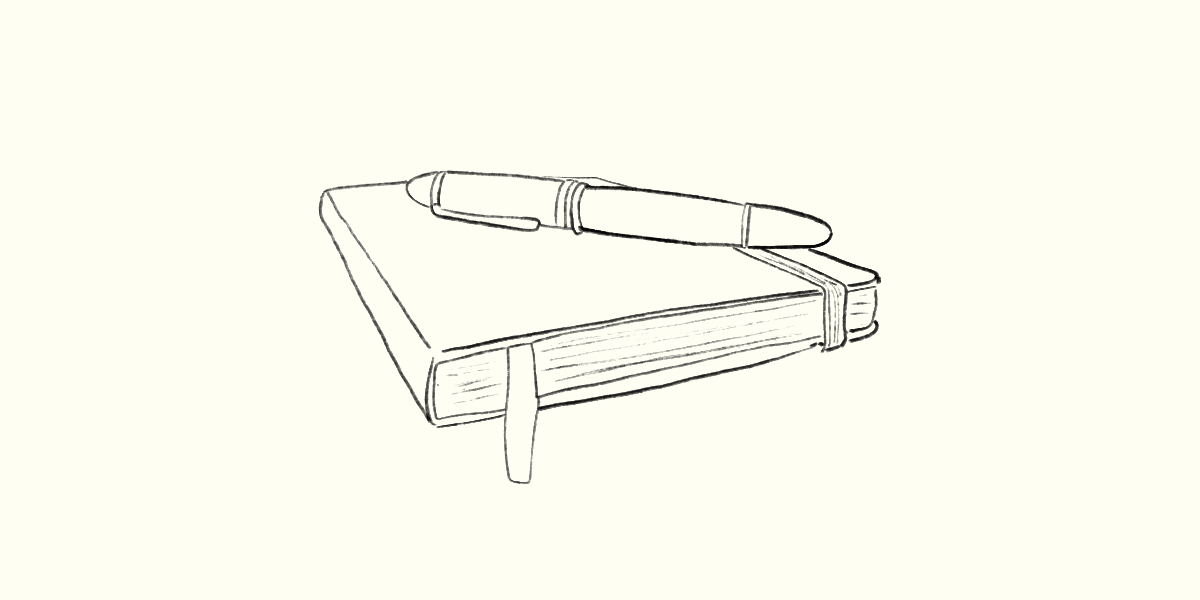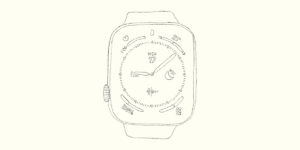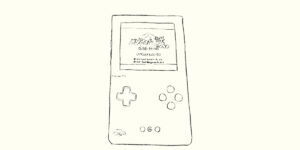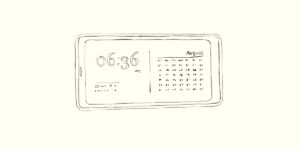I’d like to introduce you to the Moleskine notebook that I adore.
This notebook has been my companion for over 10 years now.
Since purchasing my first one 11 years ago, I’ve gone through over 30 of them.
Moleskine notebooks come with a sense of luxury, which is unusual for notebooks.
Because of this, I’ve tried substituting them with other notebooks a few times.
But I always end up returning to Moleskine.
Why am I so drawn to Moleskine?
I’d like to explore that in this piece.
What is Moleskine?
Some may wonder, “What exactly is Moleskine?”
In researching for this article, I’ve come up with a brief explanation.
It’s a notebook modeled after the legendary notebooks beloved by artists and thinkers such as Van Gogh, Picasso, Hemingway, and Bruce Chatwin.
The original Moleskine was produced by a French bookbinding company in Tours, but production ceased in 1986, making it unavailable for a while.
However, in 1997, a small company in Milan, Modo & Modo Spa, which was producing T-shirts at the time, resurrected Moleskine, and it became a huge hit.
Today, it’s widely used by writers, journalists, painters, businessmen, and more.
What we have access to are the reissued versions, so they may differ slightly from the notebooks used by Van Gogh or Picasso. The modern Moleskine is merely crafted to resemble them.
Nevertheless, Moleskine is a product with a story.
Next, let me share my experience of buying my first Moleskine.
My Encounter with Moleskine
In the spring of my 22nd year, I embarked on my first full-time job ever. The role involved consulting in the field of human resources. My job was to provide HR consulting and training to the presidents and executives of small and medium-sized enterprises.
After about a week of training upon joining, I was assigned to a department.
My first boss was a true professional. He had high standards for the quality of work and didn’t hesitate to demand top-notch performance from me as a newcomer.
Working under him naturally meant longer hours. There were many moments when I felt physically drained and challenged.
Yet, I felt fortunate to be working under him because he was dedicated to helping me grow.
I couldn’t be described as a stellar employee by any stretch of the imagination.
At the time, unbeknownst to me, I had gained a reputation as an incompetent employee.
In the consulting industry where I joined, there’s a saying: “Up or Out.” It means either you move up the ladder or you leave.
In this meritocratic world, exceptional employees get assigned more work. On the other hand, incompetent employees gradually stop receiving assignments. Without work, they find themselves without a place and eventually leave. Thanks to this system, only the best talents remain in the consulting industry.
It seemed that I wouldn’t last long, according to the perceptions of those around me.
Back then, unaware of all this, I carried on with my work nonchalantly. I believed that despite initial failures, I would eventually acquire the necessary skills. Ignorance truly is bliss.
It was my boss who extended a helping hand to me.
To survive in the consulting industry, my boss imparted numerous teachings to me.
One of the lessons from my boss was the habit of reflecting daily without fail.
It involved reflecting on what went well or why things failed during the day.
Reflecting on successes allowed for the analysis of success factors. Knowing these factors meant being able to replicate success in similar situations.
Conversely, reflecting on failures allowed for the analysis of failure factors. Knowing these factors meant avoiding repeating the same mistakes.
This practice is supported by the theory of “experiential learning” advocated by organizational behaviorist David A. Kolb. People who continuously improve their skills value reflection.
Inspired by his advice, I made efforts to reflect daily. However, there were times when I slacked off on reflection.
Even though I understood its importance, I struggled to muster the motivation. I think there were days when I skipped reflection every four days or so.
This was unacceptable to me as it wasn’t fair to my boss.
So, I made a decision.
I decided to buy an expensive notebook to motivate myself.
Good tools can motivate oneself.
So, I thought that if I bought my favorite notebook, I would want to reflect every day.
Thus, I went to a stationery store and bought the coolest, most expensive notebook I could find.
That was Moleskine.

The Reason I Use Moleskine
The reason I use Moleskine is it is beautiful.
Its antique-like appearance and the atmosphere it exudes, as if it could be used by the protagonist of a movie, make writing in it an exciting experience.
Even after over 10 years of using it, this feeling remains unchanged.
Tools that excite you when you use them are crucial in life.
It’s amazing how small things like this can change your life.
In fact, I’ve been able to cultivate the habit of reflecting daily using this notebook.
And the wonderful thing about this notebook is that it makes you want to look back on it.
Its appearance is more like a book than a notebook. It feels as if it contains the history of your own life. Therefore, you feel compelled to read through your past diary entries.
Reflecting on your own life is crucial. Your past self teaches you many things.
When my mind and life are in a bad state, I read through past diary entries. It’s to remind myself of the kind of life I was living when I was feeling good.
There’s always some reason behind feeling off.
For example, it could be that I’m not exercising enough or not taking enough time to reflect on things by myself.
Once you understand the cause, you can make adjustments.
Reading through past diary entries has become a time for me to conduct a check-up on my mental health.
How I Use My Moleskine
Let me walk you through how I actually use my Moleskine.
Daily Reflections
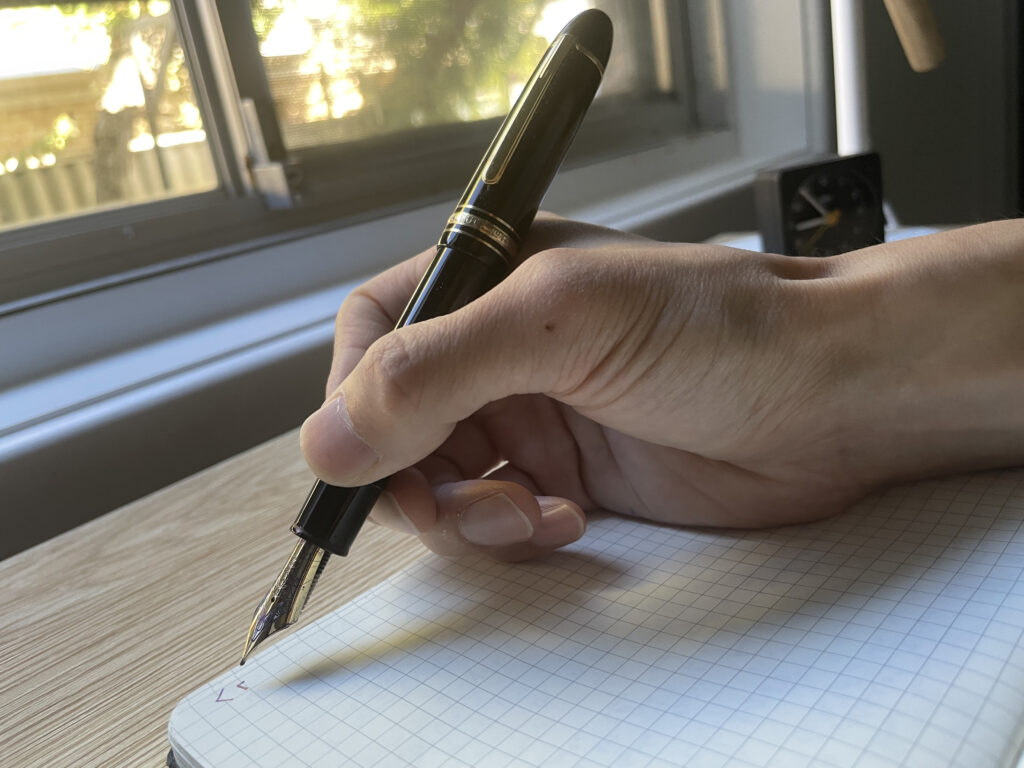
I use my Moleskine as a diary. I write in it every morning, documenting my activities from the previous day.
It’s essentially a record of what time I woke up and what I did. The key is to write down as much as I can remember of my activities.
If possible, I also note the timeframes in which I performed each activity.
This is for time management purposes.
When your time management skills are lacking, it’s difficult to remember what you did at what time.
It’s akin to people who can’t save money. They can’t remember what they spent their money on.
Reflecting on your actions with accurate records is the first step in time management.
By the way, I only write about my emotions when I feel the need to.
For example, if someone said something to me that made me upset or happy, I jot it down.
Keeping track of these emotional states helps me understand what I like and dislike.
In my case, I dislike being given too many instructions by others.
Also, not being able to have time to myself is tough.
Understanding these things reduces the frustration of not knowing why I’m feeling irritated.
Life’s Compass
I have several goals that I want to achieve in life.
However, amidst the hustle and bustle of everyday life, it’s easy to forget about my goals. If I forget about my goals, I’ll never achieve them.
That’s why I use a piece of paper with my goals written on it as a reminder. The key is to use this reminder as a bookmark in my diary.
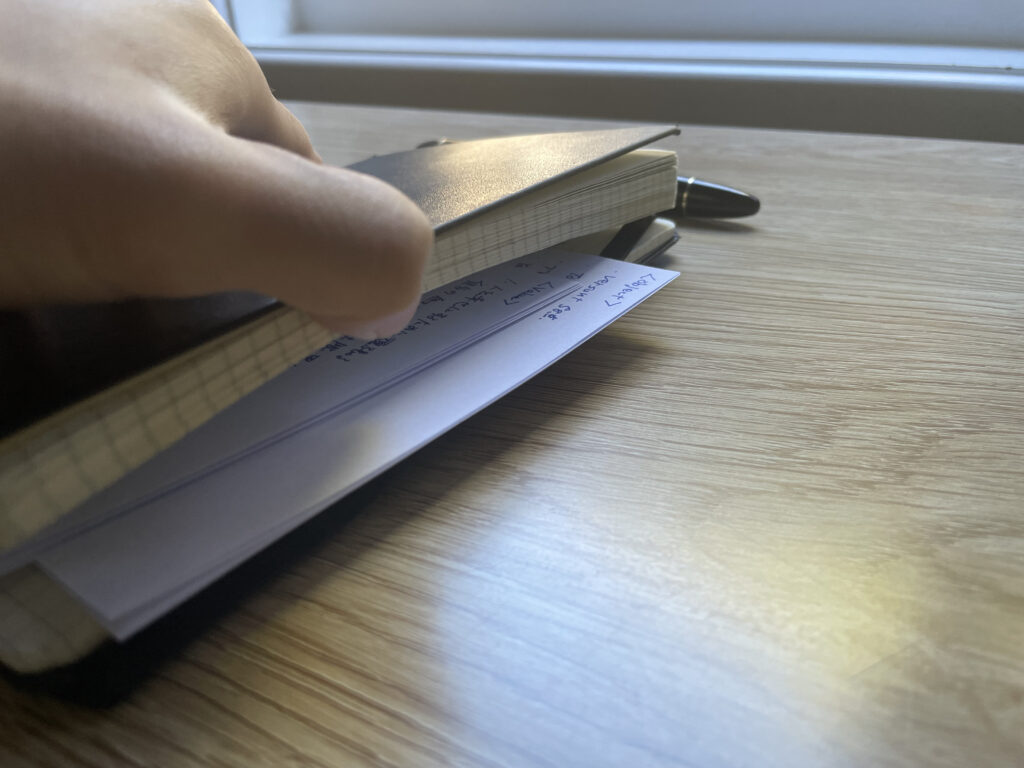
Since I see it every time I write in my diary, I can check my goals every day.
By the way, many people have heard that writing down your goals on paper makes them come true.
Based on my experience, I believe that’s true.
I’ve been able to achieve goals that I’ve written down on paper. (Although, I often don’t achieve them within the set timeframe)
If you don’t forget your goals, you can take some action every day.
Even if the progress in a day is small, over the years it becomes significant progress.
Support When I’m Feeling Weak
Despite various efforts to maintain my mental well-being, there are times when life feels tough.
During those moments, I turn to the photo of the first dog I ever had and a letter from my mother.
The first dog I had came into my life when I was born.
Growing up together, he was like a sibling to me.
Looking at his photo always lifts my spirits, no matter how tough things get.
The letter from my mother was given to me when I graduated from university.
In it, she wrote, “Don’t just strive for yourself, strive for others.”
While there are limits to how much effort one can put in for oneself, there are no limits to the effort one can put in for others.
So, the message from my mother is to strive for others!
My Moleskine has a pocket, and I always keep this letter and photo in it.
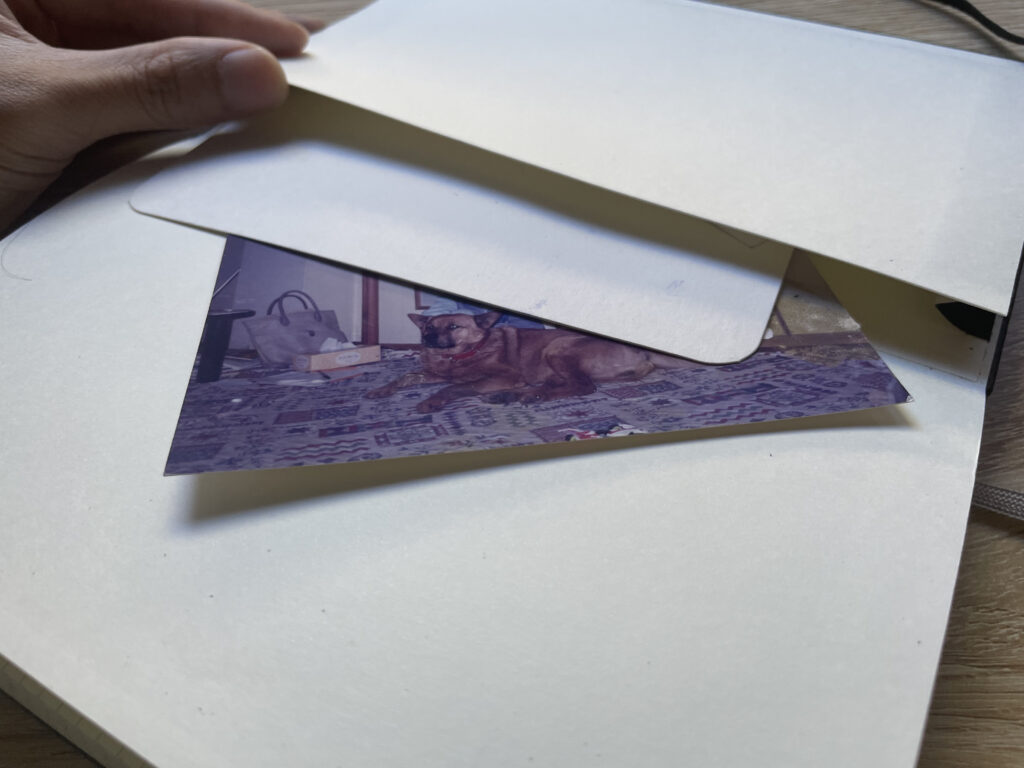
That concludes the article on Moleskine.
Finally, I would like to introduce related articles to this piece. In this article, I introduced using Moleskine as a reminder for goals. For methods of goal setting, please refer to the following article.
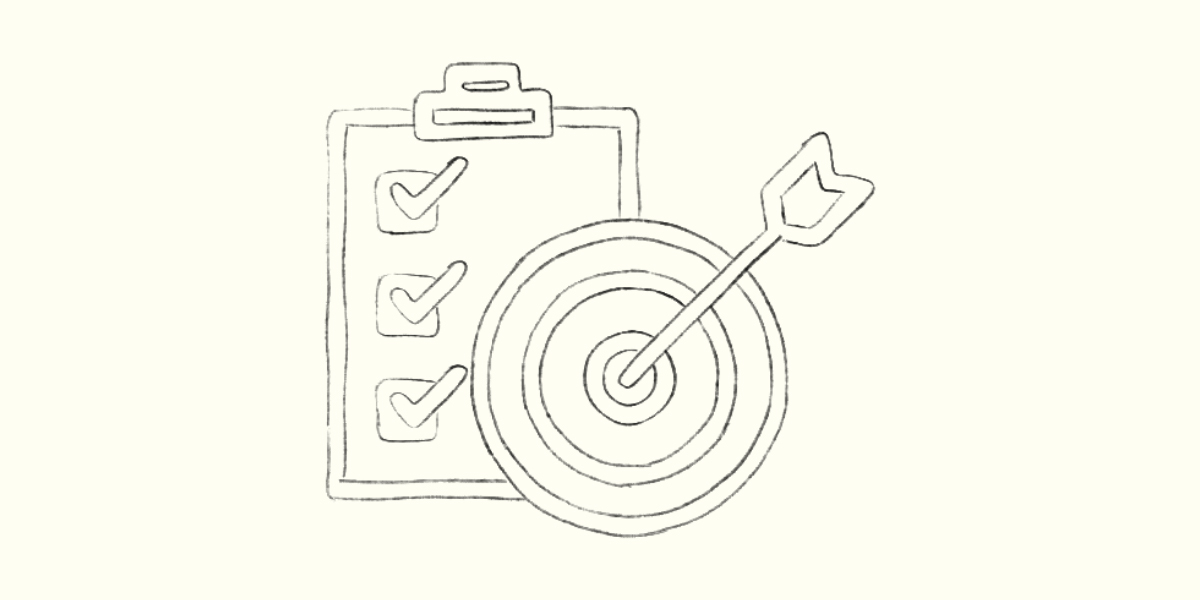
If you have any questions, feel free to send me a DM or leave a comment.
Sayonara

